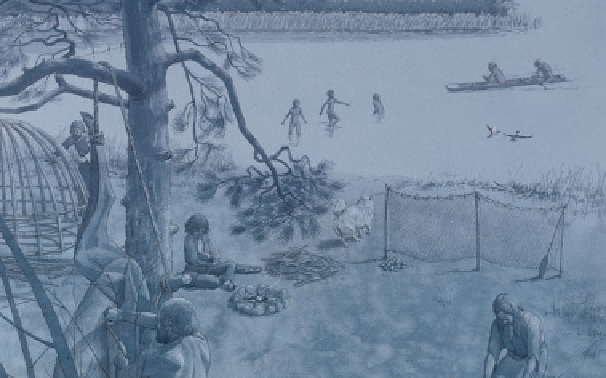Geoscience Reference
In-Depth Information
Fig. 15.2
An artist's view of a typical Mesolithic coastal settlement at the Baltic rim (Graphic:
F. Bau, Århus)
remained below sea level. Although access to these sites is only possible with the
methods developed by underwater archaeology, they are of great scientific value
because they not only offer an opportunity to recover artefacts made of organic
material but also enable information to be obtained on the dynamics of rising sea
levels.
15.3 Case Studies - The Baltic Rim as a Prehistoric
Anthroposphere and an Archive of Coastal Change
As already pointed out above, the settlement history of the Baltic area goes back to
the climate amelioration after deglaciation and has seen the rise and fall of numer-
ous cultures and societies. The study of their remains is the task of archaeologists
and historians in the respective countries and cannot be summarized in this chapter.
Instead, I will only refer to archaeological cultures and sites to the extent necessary
to understand the case studies presented here and their significance for the ques-
tions of settlement behaviour and economic strategies under discussion. Moreover,
the numerous climatic and environmental changes that occurred in the Baltic basin
during this period will only be referred to when they are essential in order to under-
stand the relative coastal changes. An exhaustive survey is not possible, nor is it
attempted.
The case studies will be discussed in chronological order, in blocks of time that
reflect the respective stages in the development of the Baltic Sea as described by
Björck (
1995
) and Lemke (
2004
).

